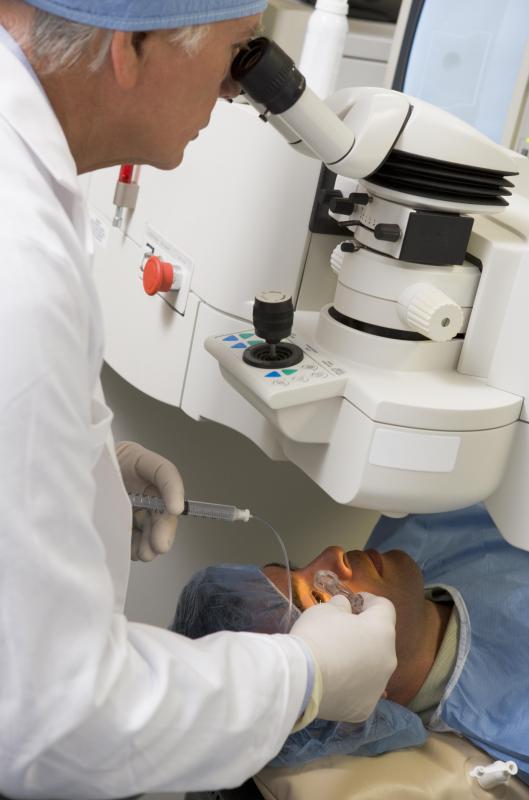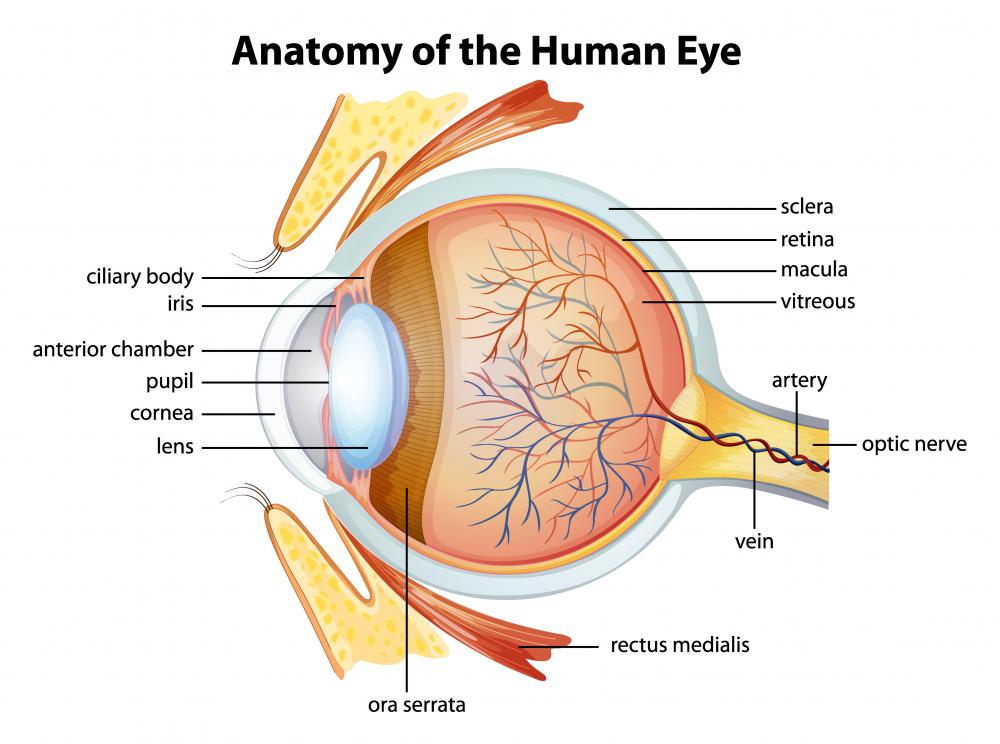At EasyTechJunkie, we're committed to delivering accurate, trustworthy information. Our expert-authored content is rigorously fact-checked and sourced from credible authorities. Discover how we uphold the highest standards in providing you with reliable knowledge.
What is a Laser?
A Light Amplification by Simulated Emission of Radiation (LASER) is a device used to concentrate light into a narrow beam. The light emitted by these devices is thin and coherent. Laser light is different from the light that normally radiates from atoms. Atoms typically radiate light randomly, resulting in light that is refereed to as incoherent. Basically, this means atoms radiate jumbles of photons that go in numerous directions. Coherent light behaves quite differently, going in one clearly defined direction.
To create coherent light for a laser, the right atoms must be used in the right kind of environment to allow the atoms to emit light at a particular time and in a precise direction. Atoms or molecules of gases, liquids, crystals, or other materials are used to make lasers. These atoms are excited within a cavity, putting most of them at higher energy levels, while reflective surfaces in the cavity reflect energy and enable it to build up. Through a process called stimulated emission, photons with matching frequencies and phases are emitted. Finally, a fast, chain reaction occurs, discharging atoms and leading to the production of coherent light.

The laser made its debut in 1960. Now, it is available in many different sizes, ranging from those about the size of a grain of sand to those as big as some buildings. Despite such variations, most lasers produce light beams that are very thin and capable of maintaining size and course, even when traveling over great distances.
Lasers are used for an amazing variety of things. They have many important applications in modern medicine, including Laser-Assisted in Situ Keratomileusis (LASIK) eye surgery. They are also important in many manufacturing and construction processes, as well as military and scientific applications. Many people have turned to laser printers to make printing professional-looking documents easier. Likewise, lasers are important components of Compact Disc (CD) and Digital Video Disc (DVD) players.
AS FEATURED ON:
AS FEATURED ON:

















Discussion Comments
What does "coherent" in "create coherent light" mean?
You can have fun building stuff with lasers.
I played with electronics years ago. Although I never did build anything with lasers, I remember coming across an article in Popular Electronics that showed you how to make a laser alarm.
It only required a few components, which I think you could get from Radio Shack or someplace like that. Basically you have a laser pointing at a photo cell, which is connected to the alarm circuit.
When someone crosses the laser light it trips the alarm. I don’t have the original issue of that magazine anymore, but I’m sure you can find similar how to articles on the Internet that show you how to do that.
@NathanG - I can’t say either way whether the laser technology is really up to snuff for weapons delivery.
I do agree however that just about every implementation of laser technology you see nowadays (at least for the mass market) is fairly benign.
For example, a CO2 laser is used in reconstructive face surgery. They use it to remove wrinkles and face lines, and supposedly the technology ushers in a whole new era of age defying treatments, if you believe the ads.
Personally, I’ve never undergone any treatments that have used lasers. I do need vision correction, but the thought of laser beams shooting into my retina don’t set me at ease, and I assume that you would need to be very much at ease to sit for such a procedure.
@nony - Yes, one of the ways that lasers differ from what you see in the science fiction movies is that most lasers we see nowadays are not destructive in nature. They are usually used in laser pointers or printers or mundane stuff like that.
However, I have heard that it is possible to use lasers in a destructive manner. For example, the so-called strategic defense initiative (or the fabled “Star Wars” defense shield) is supposed to be capable of shooting down intercontinental ballistic missiles.
It does this, in theory, by shooting lasers at the missiles so that they are destroyed. Obviously these would have to be very powerful lasers, and here you are probably talking about the level of energy you see in the science fiction movies where they have "phaser" guns and stuff.
So I think that there must have be some scientific merit to the idea of destructive lasers, otherwise the program would never have gotten off the ground.
@jockndoris - I don’t think that it’s possible to build a laser machine that will transmit heat in the way that you suggest.
Yes, the laser light is made up of accelerated atoms, which I am sure generate some heat, but I think it’s a negligible amount compared to what you’re suggesting. Actually, the amount of heat would be destructive to the recipient if increased to high levels.
I believe that your question is somewhat suggestive of another concept, the idea of teleportation. I think in order to “transmit” heat safely you would basically have to teleport it.
The problem with teleportation is that it usually takes a lot more energy to teleport the object you’re sending than would be practical, notwithstanding how easy the science fiction shows make it look.
Anyway, I am not a scientist but that’s my opinion.
explain the principle of working & construction of laser tachometer..
what is holographic memory? how does it work?
Can you transmit heat waves via a mobile phone. We send radio waves and sound waves in this way.
Would it be possible to send signals at heat wave frequencies and so send heat from one phone to the other?
Great if a person in a hot climate could send heat to someone in a cold climate.
Post your comments